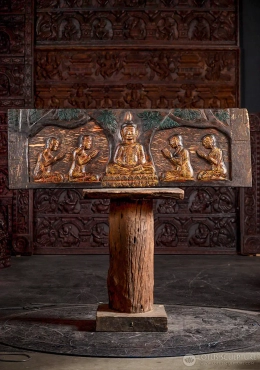Navratri is one of the most important Hindu festivals that is celebrated with great enthusiasm across India. The word “Navratri” is derived from Sanskrit and it loosely translates to – “nine nights.” This means that this festival spans nine days and during these days the nine forms of Goddess Durga are worshiped.
Navratri holds a lot of spiritual, cultural, and social significance. It marks the victory of good over evil and celebrates the triumph of Goddess Durga over the demon Mahishasura. This festival also encourages people to reflect on inner strength, positivity, and devotion. In this blog, we will explore the rituals, traditions, and the nine forms of Goddess Durga that are celebrated with great excitement during Navratri.

Navratri Rituals & Traditions
Navratri rituals are deeply rooted in devotion and faith. They vary slightly from region to region. But all these have some common practices that are followed across the country.
- Ghatasthapana (Kalash Sthapana)
Navratri begins with Ghatasthapana. This stage usually marks the start of the festival. A pot or kalash is placed at a sacred spot in the house that basically symbolizes the presence of the Goddess. The pot is then filled with water and topped with a coconut. It is then surrounded by mango leaves. This ritual basically invites Goddess Durga to reside in the home for the nine days of the festival.
- Fasting
Fasting is a key part of Navratri. Many people observe a fast during all nine days. On the other hand, some people fast only on the first and last day. Fasting is believed to purify the body and mind which then further prepares the devotees for divine blessings. During the fast, foods like fruits, dairy, and special grains are consumed. Moreover, one has to avoid regular grains like wheat and rice.
- Offering Prayers and Aarti
Prayers are offered to one of the nine forms of Goddess Durga on every day of Navratri. Devotees recite Durga Saptashati which is a sacred text that describes the battles of the Goddess and victories over evil. On the same note, an aarti which is a devotional song is typically sung in her honor. People also light lamps and offer flowers, sweets, and fruits to the Goddess.
- Garba and Dandiya
In northern and western regions of India and especially in Gujarat a lot of people celebrate Navratri by performing traditional dances like Garba and Dandiya. These dances are performed in circles around a lamp or an idol of the Goddess. The rhythm of the music usually comes along with the dance. Thus, symbolizing the energy and vibrancy of life.
- Kanya Pujan
Many families around the globe perform Kanya Pujan on the eighth or ninth day of Navratri. This is the day when young girls (representing the nine forms of Goddess Durga) are worshiped. The girls are invited to the home where their feet are washed and they are given food, gifts, and blessings. In this way, this ritual usually emphasizes the purity and power of women.

The Nine Forms of Goddess Durga
Each day of Navratri is dedicated to a different form of Goddess Durga which is known as Navadurga. These forms represent various aspects of the divine feminine and each one has its significance in Hindu mythology.
1. Shailaputri
The first day is dedicated to Goddess Shailaputri. Goddess Shailaputri is regarded as the daughter of the mountains. She represents strength, calm, and devotion. She is often depicted riding a bull while holding a trident and a lotus.
2. Brahmacharini
On the second day, Goddess Brahmacharini is worshiped. She is the form of Goddess Durga who performed intense penance to obtain Lord Shiva as her consort. Her simple appearance symbolizes discipline, virtue, and determination.
3. Chandraghanta
The third day celebrates Goddess Chandraghanta. She wears a half-moon on her forehead which eventually translates to what the name means. She rides a tiger and represents courage and grace. She is invoked to ward off evil and bring peace and prosperity.
4. Kushmanda
Goddess Kushmanda is worshiped on the fourth day. This form is believed to have created the universe with her divine smile. She symbolizes creativity and the power to bring light to darkness.
5. Skandamata
The fifth day is dedicated to Goddess Skandamata who is also regarded as the mother of Lord Kartikeya (also known as Skanda). She is depicted holding her son in her lap and riding a lion. Skandamata is associated with nurturing, protection, and wisdom.
6. Katyayani
Goddess Katyayani is worshiped on the sixth day. She is known as the warrior goddess who destroyed the demon Mahishasura. She represents courage and the ability to overcome obstacles.
7. Kalaratri
The seventh day is dedicated to Goddess Kalaratri which is the fiercest form of Durga. She has a dark complexion and rides a donkey. She is a protector and is invoked to destroy ignorance and darkness while having a fearsome appearance.
8. Mahagauri
On the eighth day, Goddess Mahagauri is worshiped. She is fair and serene, symbolizing purity, forgiveness, and calmness. She is often depicted riding a bull and holding a trident and a drum.
9. Siddhidatri
The ninth day is dedicated to Goddess Siddhidatri who grants siddhis (spiritual powers) to her devotees. She is believed to be the one who completes the universe. Siddhidatri is depicted sitting on a lotus while bestowing blessings and powers.
Conclusion
Navratri is a festival that celebrates the divine feminine energy in its many forms. Through the devotion to the nine forms of Goddess Durga, devotees reflect on the importance of strength, compassion, and spirituality in their lives. Each day brings a deeper connection to these values. Thus, reminding people of the ever-present power of good over evil. Hence, Navratri serves as a time for both celebration and introspection as one follows these rituals and honors the Goddess.





